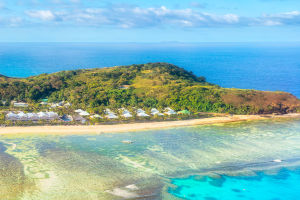Friends, imagine stepping off the plane into one of the world’s largest urban jungles, where every corner offers a new burst of color, taste, and sound. For many, São Paulo conjures questions about safety amid its skyscrapers and street art.
São Paulo stands out with its expansive parks, particularly the famous Ibirapuera Park, an ideal space for relaxation, picnics, and outdoor fitness activities. This guide delivers clear, experience‑driven insights—complete with exact costs, schedules, and insider tips—to help plan a worry‑free adventure in Brazil’s powerhouse city.
Urban Energy
At sunrise (5 am), Ibirapuera Park becomes a fitness hub: bike rentals cost $4 for a two‑hour session, while guided running groups meet at the main entrance by 6 am.
By 9 am, Mercado Municipal fills with locals sampling caprese sandwiches for $8 and pastel snacks for $4. Guided food tours here run at $12 per person, including fresh fruit tastings.
Avenida Paulista hums by 10 am as art lovers queue at MASP (São Paulo Museum of Art), where tickets are $10 and hours span 10 am–6 pm, Tuesday through Sunday.
Neighborhood Highlights
Pinheiros offers brunch spots serving avocado toast for $10 and craft coffee at $3. Vila Madalena’s famed Beco do Batman hosts free street‑art tours every Saturday at 11 am—pack a daypack ($20 anti‑theft model) and remain alert, as pickpocketing can arise in crowded alleys.
In Jardins, three‑star hotels along Rua Oscar Freire start at $80 per night with breakfast and Wi‑Fi included. Budget travelers find hostel beds in Vila Mariana for $15–$25 nightly; choosing lodgings within two blocks of Metro Lines 2 or 4 adds both convenience and an extra layer of security.
Safety Reality
Official data shows violent crime down nearly 30% from a decade ago, thanks to expanded street lighting and patrols. Petty theft remains the most common tourist complaint—phones or wallets may go missing in crowded markets between 11 am and 3 pm. CCTV cameras and uniformed officers patrol major squares like Praça da República, helping keep risk low.
Transport Guide
São Paulo’s Metro runs from 4:40 am to midnight across six lines. A single ride costs $1.20 and allows unlimited transfers within two hours. Buses add coverage for $1.30 per trip, with overnight “Corujão” lines numbered in the 600s operating past midnight.
Recharge the Metro card at station vending machines or convenience stores. During rush hours (7–9 am, 5–7 pm), platforms become crowded—plan trips outside these windows when possible, or opt for rideshares for door‑to‑door service.
Budget Planning
Mid‑range hotel rooms near Paulista range from $60 to $120 nightly, often including breakfast, gym access, and shuttle service. Hostel dorms in central neighborhoods cost $15–$25 per bed, with shared kitchens and lockers.
Daily meals can fit a $50–$70 budget: breakfast at $5 (bakery items and coffee), lunch at $8 (buffet‑style restaurants), and dinner at $12 (casual bistros).
Add museum admissions ($10–$20), a football match ticket at Allianz Parque from $20, and travel insurance at $10 per week to cover medical care and lost luggage.
Language Tips
Learning basic Portuguese phrases transforms interactions: “bom dia” (good morning), “por favor” (please), and “obrigado” (thank you) go a long way. Menus and signs remain primarily in Portuguese, so translation apps or phrasebooks help.
Free weekly language‑exchange meetups occur Saturdays at 10 am under the Ibirapuera Park’s main gazebo—bring a notebook and connect with locals seeking English practice, while refining pronunciation and cultural etiquette.
Unique Experiences
Art enthusiasts can attend MASP’s Wednesday night open‑mic sessions, included in the $10 entry fee, running from 6 pm to 9 pm.
Football fans may secure tickets for a Saturday evening match at Pacaembu Stadium, with prices starting at $20 and gates opening at 5:30 pm.
For a riverborne perspective, Tietê River boat tours operate at 3 pm daily—advance booking runs $25 and includes bottled water.
Late‑night samba workshops in Vila Madalena cost $15 for two hours, offering a hands‑on cultural immersion.
Conclusion
Travelers who blend curiosity with preparation will discover a São Paulo that feels more welcoming than its reputation suggests. By choosing secure lodgings, planning transport around peak hours, budgeting accurately, and mastering a few Portuguese phrases, it’s possible to navigate every vivid neighborhood confidently. Which tip will guide your first steps through São Paulo? Reflect on these insights and craft the journey of a lifetime!


